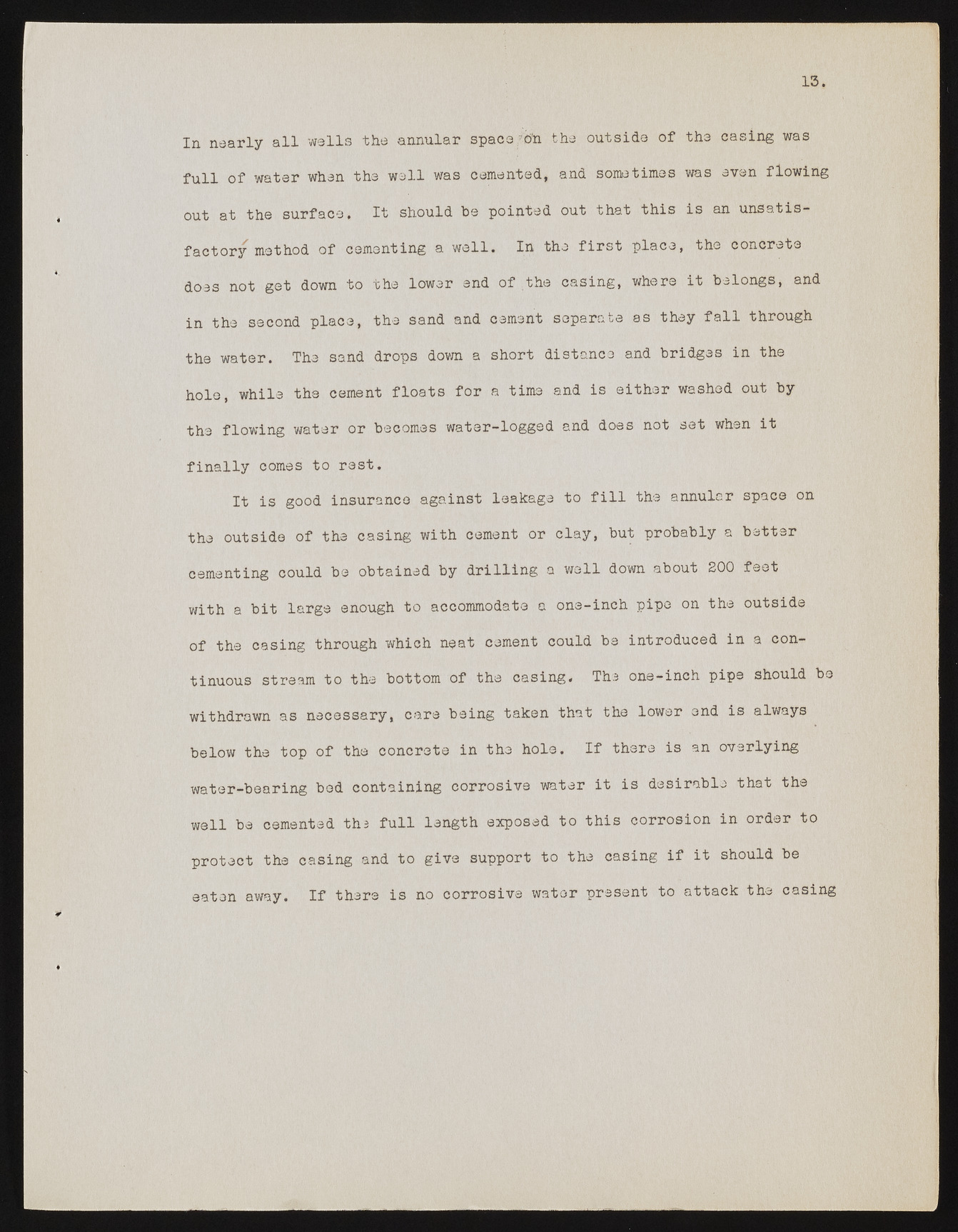Copyright & Fair-use Agreement
UNLV Special Collections provides copies of materials to facilitate private study, scholarship, or research. Material not in the public domain may be used according to fair use of copyrighted materials as defined by copyright law. Please cite us.
Please note that UNLV may not own the copyright to these materials and cannot provide permission to publish or distribute materials when UNLV is not the copyright holder. The user is solely responsible for determining the copyright status of materials and obtaining permission to use material from the copyright holder and for determining whether any permissions relating to any other rights are necessary for the intended use, and for obtaining all required permissions beyond that allowed by fair use.
Read more about our reproduction and use policy.
I agree.Information
Digital ID
Permalink
Details
Member of
More Info
Rights
Digital Provenance
Publisher
Transcription
13. In. nearly all wells the annular space tb'n the outside of the casing was full of water whan the well was cemented, and sometimes was even flowing out at the surface. It should be pointed out that this is an unsatisfactory method of cementing a well. In the first place, the concrete does not get down to the lower end of the casing, where it belongs, and in the second place, the sand and cement separate as they fall through the water. The sand drops down a short distance and bridges in the hole, while the cement floats for a time and is either washed out by the flowing water or becomes water-logged and does not set when it finally comes to rest. It is good insurance against leakage to fill the annular space on the outside of the casing with cement or clay, but probably a better cementing could be obtained by drilling a well down about 200 feet with a bit large enough to accommodate a one-inch pipe on the outside of the casing through which neat cement could be introduced in a continuous stream to the bottom of the casing. The one-inch pip® should be withdrawn as necessary, care being taken that the lower end is always below the top of the concrete in the hole. If there is an overlying water-bearing bed containing corrosive water it is desirable that the well be cemented thi full length exposed to this corrosion in order to protect the casing and to give support to the casing if it should be eaten away. If there is no corrosive water present to attack the casing

